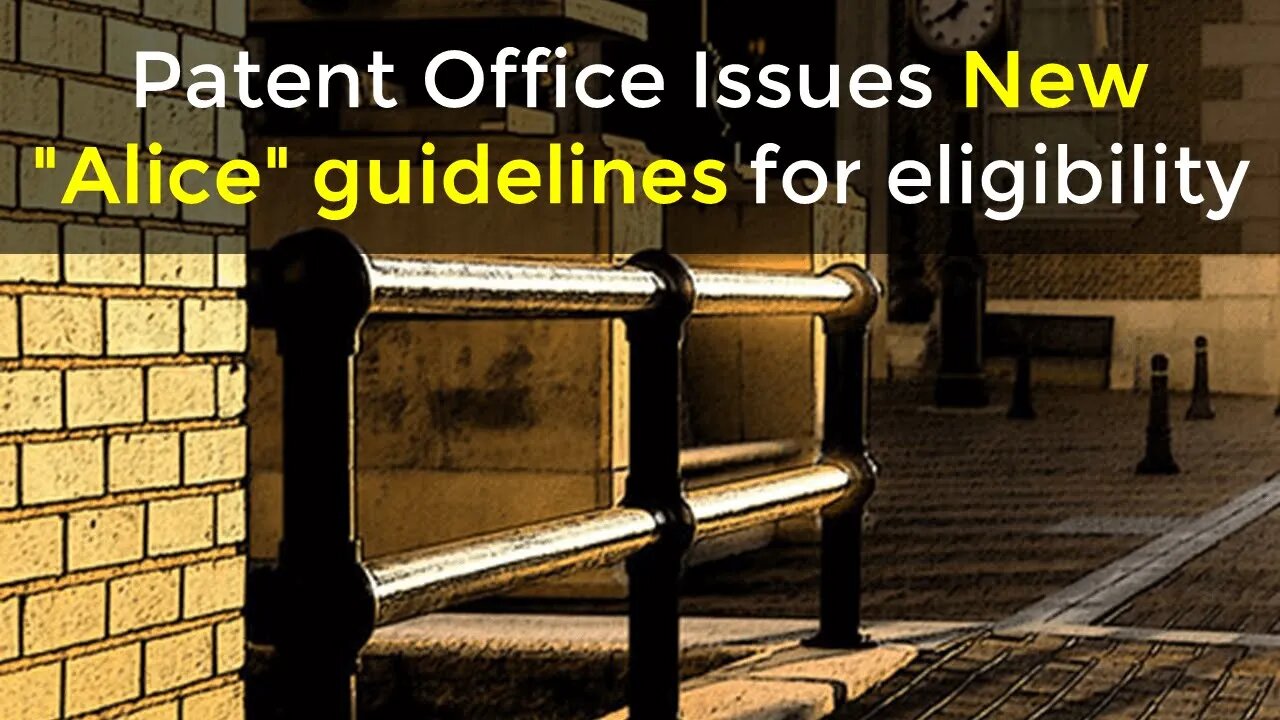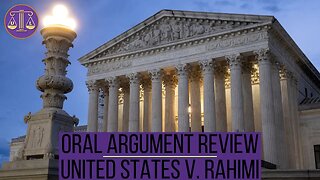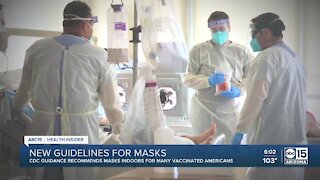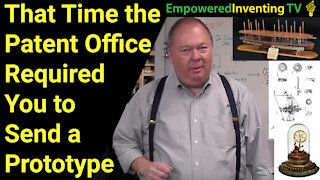Premium Only Content

Patent Office Issues New "Alice" guidelines for eligibility
Late last week, the United States Patent and Trademark Office (USPTO) published updated guidance to patent examiners for evaluating subject matter eligibility. This update was in response to comments received in response to the 2019 Patent Eligibility Guidance (2019 PEG) released in January and is intended to assist in applying the 2019 PEG.
In the updated guidance, the USPTO provides discussion on five themes: (1) evaluating whether a claim recites a judicial exception; (2) the groupings of abstract ideas enumerated in the 2019 PEG; (3) evaluating whether a judicial exception is integrated into a practical application; (4) the prima facie case and the role of evidence with respect to eligibility rejections; and (5) the application of the 2019 PEG in the patent examining corps.
(1) Evaluating whether a claim recites a judicial exception
The update first dives into the meaning of "recites" and states that a claim recites a judicial exception when the judicial exception is "set forth" or "described" in the claim. The update gives two examples in which an exception can be recited in a claim: (1) in Diamond v. Diehr, the stated mathematical equation was set forth as a calculating step; and (2) in Alice Corp. v. CLS Bank, the claims "described" the concept of intermediated settlement without ever explicitly using the words "intermediated" or "settlement." It is, therefore, important for examiners to evaluate the claim and determine whether the claim sets forth or describes the judicial exception.
(2) The groupings of abstract ideas enumerated in the 2019 PEG
As set forth in the 2019 PEG, the USPTO has shifted its approach from a case-comparison approach in determining whether a claim recites an abstract idea to instead use enumerated groupings of abstract ideas because these groupings are "firmly rooted in Supreme Court precedent as well as Federal Circuit decisions interpreting that precedent."
The update discusses the three groupings of abstract ideas enumerated in the 2019 PEG: (1) mathematical concepts; (2) methods of organizing human activities; and (3) mental processes.
For instance, the update provides the following subheadings for methods of organizing human activities and then examples of each
Fundamental economic practices or principles, including (1) local processing of payments for remotely purchased goods; (2) using a marking affixed to the outside of an object to communicate information about the object; and (3) placing an order based on displayed market information.
Commercial or legal interactions, including (1) a transaction performance guaranty, which is a contractual relationship; (2) processing insurance claims for a covered loss or policy event under an insurance policy; (3) arbitration; (4) using advertising as an exchange or currency; (5) offer-based price optimization; and (6) processing information through a clearinghouse.
Managing personal behavior or relationships or interactions between people, including (1) a set of rules for playing a dice game; (2) voting, verifying the vote, and submitting the vote for tabulation; (3) assigning hair designs to balance head shape; and (4) hedging.
(3) Evaluating whether a judicial exception is integrated into a practical application
This update notes that "specificity of claim limitations is relevant to the evaluation of several considerations including the use of a particular machine, particular transformation, and whether the limitations are mere instructions to apply an exception."
(4) Requirements of a prima facie case
The update reiterates what the USPTO laid out in the 2019 PEG, namely:
The examiner should identify the judicial exception by referring to what is recited in the claim and explain why it is considered an exception. For instance, a rejection due to an abstract idea should explain why a specific limitation in the claim falls within one of the enumerated groupings of abstract ideas. For a law of nature, the examiner should identify the law of nature and explain why it is considered to be a law of nature.
The examiner should identify any additional elements recited in the claims beyond the judicial exception and evaluate the integration into the practical explanation by explaining either (1) that there are no additional elements; or (2) the claim, as a whole, does not integrate the exception into a practical application.
(5) Application of the 2019 PEG in the patent examining corps
The USPTO discusses steps it has taken to enhance examiners’ understanding of the revised eligibility guidelines, which has included providing guidance materials and additional training.
-
 3:02:45
3:02:45
UncivilLaw
1 year agoSupreme Showdown: Unpacking the United States v. Rahimi Gun Rights Battle
367 -
 7:21
7:21
John Fredericks Media Network
2 years ago $0.09 earnedRandy Landreneau Issues Warning on China's US Patent Encroachment
1351 -
 3:32
3:32
KNXV
3 years agoCDC issues new guidelines for masks
893 -
 6:32
6:32
Empowered Inventing TV
3 years agoThat Time the Patent Office Required that You Send a Prototype
23 -
 0:57
0:57
WFTX
3 years agoCDC issues new guidelines for summer camps
471 -
 2:08:22
2:08:22
The Quartering
3 hours ago20,000 Feds QUIT, DOGE Workers Lives At Risk, Trump Vs Dept Of Education, Brie Larson Based & More
31.1K27 -
 DVR
DVR
vivafrei
16 hours agoLive with Enrique Tarrio! Jan. 6 Lawfare ON STEROIDS! Proud Boys & Beyond!
46.7K19 -
 58:19
58:19
Ben Shapiro
3 hours agoEp. 2131 - Trump and Musk Bring The CHAINSAW
46.3K28 -
 1:12:31
1:12:31
Russell Brand
4 hours agoTrump’s Trade Wars: Power Plays and Global Repercussions – SF531
69.9K36 -
 29:57
29:57
The Finance Hub
1 hour agoBREAKING: DONALD TRUMP JR. JUST DROPPED A MAJOR BOMBSHELL!!!
1.05K7